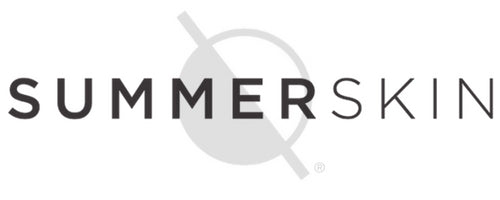Sun & Your Skin
Here at SUMMERSKIN, we love the sun and we believe that with the right knowledge, habits, and protection, a life in the sun can be a happy and healthy one.
As with most things, the sun and it's Ultraviolet (UV) rays come with both positive and negative effects. UV from the sun helps our bodies produce Vitamin D, improves our moods, and even helps some skin conditions, like psoriasis.
Without the right protection, though, excessive sun and UV exposure have damaging effects on our health. Premature aging, sunburns, eye damage, and skin cancer, to name a few.
Below are the facts. SUMMERSKIN recommends a complete sun protection program to help you stay safe in the sun: seek shade, wear UPF 50+ SUMMERSKIN clothing, wide brim hats, and wrap sunglasses, use SPF 15+ sunscreen on exposed skin, and avoid indoor tanning.

-
Sun exposure (environmental) and indoor tanning beds (artificial) provide the main sources of indirect and intentional Ultraviolet (UV) radiation. UV radiation exposure is the main environmental and artificial cause of skin cancer. (3)
-
UV and sun exposure are associated with up to 90% of the signs of premature aging of the skin.(4)
-
In the U.S., one in every five people will develop skin cancer in their lifetime.(1)
-
Under the age of 40, the two types of cancer that women have the highest probability of developing are breast cancer and melanoma.(2)
-
Approximately 75% of skin cancer deaths can be attributed to melanoma. It is estimated that one person dies of melanoma every hour.(2)
-
Melanoma is the second most common form of cancer for adolescents and young adults ages 15-29, with the highest rates between the ages of 25-29.(5)
-
When melanoma is diagnosed early (when the lesion is still localized), the 5-year survival rate is 98%. However, if melanoma is not detected until after it has spread to other areas of the body the 5-year survival rate can be as low as 16%.(2)
-
Compared to the general population, melanoma survivors are approximately 9 times more likely to develop additional melanomas, and the risk can remain elevated even 20 years after the initial diagnosis.(6)
-
The World Health Organization’s International Agency for Research on Cancer (IARC) has placed indoor tanning beds into the highest cancer risk group, “Group 1: Carcinogenic to humans.” Along with UV radiation, other carcinogens listed in “Group 1” include asbestos, plutonium and tobacco smoke.(7)
-
The IARC states that the use of tanning beds prior to the age of 30 increases a person’s risk of developing melanoma by 75%.(7)
- More people develop skin cancer from indoor tanning than develop lung cancer from smoking. (8)
-
Studies suggest that the tanning process is directly initiated by DNA damage within skin cells, and that the DNA damage can occur even before a sun tan or burn is evident. Thus, there is no “safe” tan.(9)
1. Robinson, JK. Sun exposure, sun protection, and vitamin D. JAMA 2005; 294:1541-43.
2. American Cancer Society. Cancer Facts & Figures 2011. Atlanta: American Cancer Society; 2011.
3. IARC Working Group. The association of use of sunbeds with cutaneous malignant melanoma and other skin cancers: A systematic review. Int. J. Cancer 2006; 120:1116-1122.
4. U.S. Environmental Protection Agency. Health effects of overexposure to the sun. Link. Updated July 1, 2010. Accessed May, 2012.
5. Altekruse SF, Kosary CL, Krapcho M, et al. SEER Cancer Statistics Review, 1975-2007, National Cancer Institute. Link. Accessed May, 2012.
6. Bradford PT, Freedman DM, Goldstein AM, Tucker MA. Increased risk of secondary primary cancers after a diagnosis of melanoma. Arch Dermatol 2010; 146(3):265-272.
7. IARC, 2010, Agents Classified by the IARC Monographs’, Volumes 1-100; Link. Accessed May, 2012.
8. Wehner. MR. et. al. International prevalence of indoor tanning: a systematic review and meta-analysis. JAMA Dermatol. 2014 Apr; 150(4): 390–400.
9. Lin. J. et.al, Melanocyte biology and skin pigmentation. Nature 2007; 445:843-850
